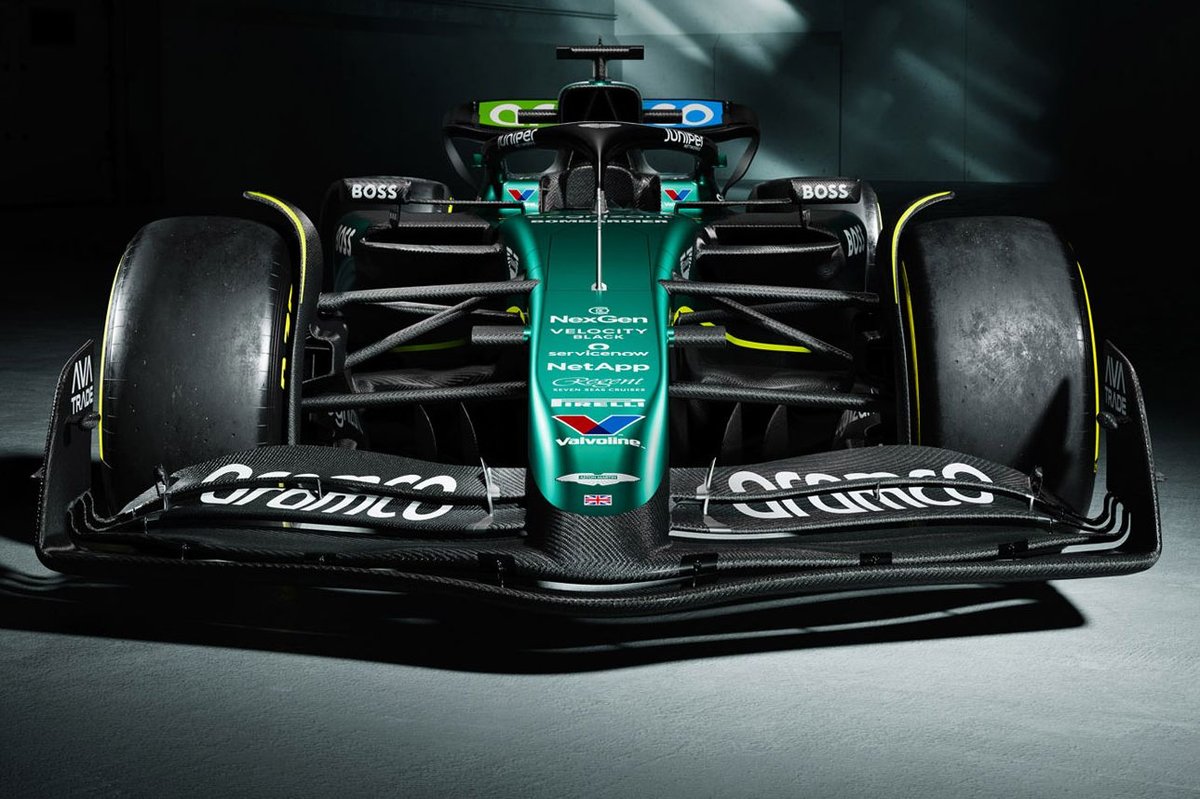Aston Martin’s strong performance at the start of the 2023 season took a downturn, leaving questions about their ability to analyze, recover, and build upon lost performance from the previous season.
Turning our attention to the sidepods, Aston Martin has once again pushed the boundaries, following a trend seen in previous launches. Similar to how they approached Alpine’s sidepod concept last season, Aston Martin has taken inspiration from Red Bull’s inlet design, which underwent significant changes last year.
They’ve incorporated a more extreme version into the AMR24’s sidepod, with an elongated lower lip positioned higher on the chassis, enhancing the sidepod’s undercut and providing better airflow management around the turbulent wake generated by the preceding tire.
The elongated design allows the inlet to be set back further and is larger than it initially appears, particularly at its outboard point, thanks to careful shaping of the bodywork.
While the overall concept of the sidepod remains similar to last year’s design, it has been meticulously optimized to leverage aerodynamic connections with the floor and ancillary components.

Another notable change in the AMR24 is the switch from a pull-rod to a push-rod layout in the rear suspension, prompted by Mercedes, from whom they source the gearbox and rear suspension components.
This alteration affects the car’s packaging, necessitating adjustments in exhaust and cooling configurations. Consequently, modifications have been made to the engine cover outlet and surrounding bodywork to accommodate the new layout, leveraging gulley formations to aid flow control.
Although the push-rod suspension layout poses challenges in weight distribution, it offers aerodynamic benefits by providing a clearer passage above the floor and enabling previously unattainable geometries within the diffuser region.
In the front of the car, the push-rod layout is retained with subtle adjustments to the suspension layout and fairings to optimize aerodynamic performance and enhance connectivity between the front wing, floor, and sidepod region.
Notably, Aston Martin has reverted to a shorter nosecone arrangement, resembling their 2022 design, altering the tip position’s relationship with the main plane for both structural and aerodynamic benefits.
Continuing from their 2023 developments, Aston Martin’s front wing incorporates outboard segments to outwash airflow in conjunction with endplate geometry, while the floor edge features an optimized edge wing to complement current floor geometries.
Aston Martin has further refined the semi-detached tip section solution for the rear wing, first introduced at the Abu Dhabi season closer, although not depicted in the renders but observed during the shakedown.

